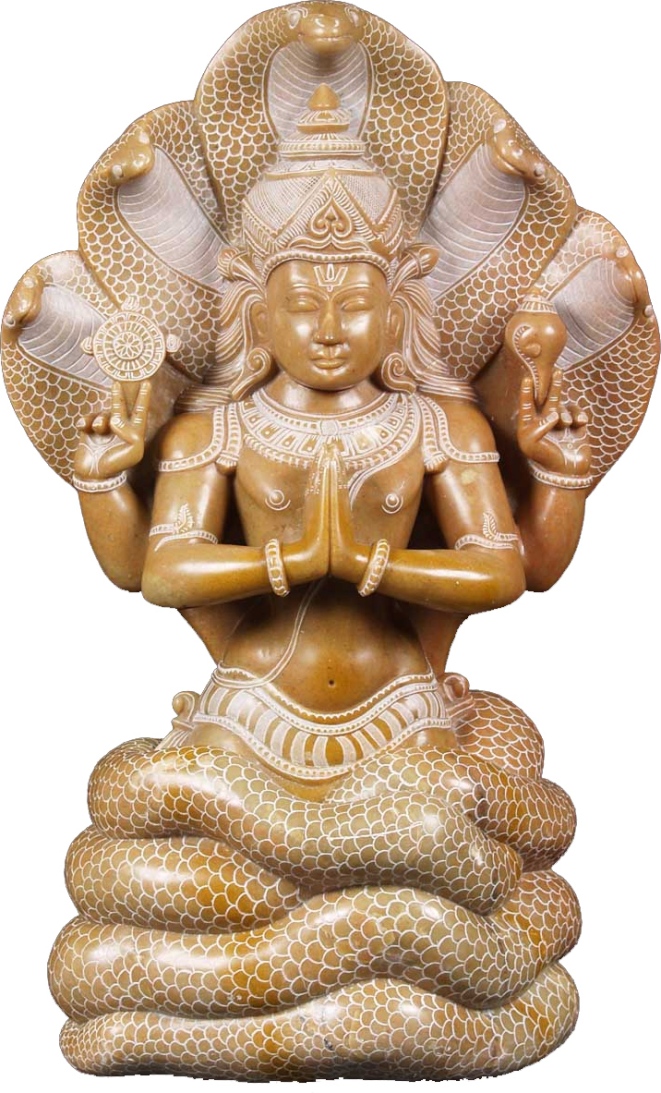Sage Patanjali is considered the “Father of Yoga”, who compiled the authoritative classical text – The Yoga Sutras, which dates back to 200 BCE – 200 CE. He is arguably the greatest Yoga master of all time. Although references to Yoga appeared in various Hindu texts throughout millennia, Patanjali compiled these already existing teachings in an easy to understand manner in his treatise. Sage Patanjali is also considered an incarnation of Ananta Shesha, the lord of the serpents. Many Yogis bow down to Ananta Shesha before they begin their Yogic practice.
 The Patanjali statue In Patanjali Yog Peeth, Haridwar
The Patanjali statue In Patanjali Yog Peeth, Haridwar
Patanjali is also credited with authoring two other notable works. First is the Mahabhashya dating around 2nd Century BCE. This is a commentary on the authoritative Sanskrit grammar text Ashtadhyayi, written by Panini, the Indian Grammarian. The second is the Carakavarttika, dating somewhere between the 8th and 10th centuries, which is a commentary on the Charaka Samhita, a large treatise on Ayurveda (traditional Indian medicine). The timeline for when these books were written is baffling for the scholars since these are 1000s of years apart. However many in the Hindu tradition consider Patanjali to be a divine figure.
Patanjali is said to be self-born, “swayambhu”, a highly-evolved soul who incarnated of his own will in a human form to help humanity. His name is listed as one of the 26 mythical divine serpents in various Puranas (ancient Hindu texts). His Yoga teachings are also depicted in the form of Ananta (the divine lord of Serpents).
 King Bhoja — an 11th-century patron of arts, literature, and science — wrote in the introduction of his “Royal Sun” commentary of Patanjali’s Yoga Sutras:
King Bhoja — an 11th-century patron of arts, literature, and science — wrote in the introduction of his “Royal Sun” commentary of Patanjali’s Yoga Sutras:
“I bow with folded hands to Patanjali, the best of sages, who removed the impurities of the mind through yoga; the impurities of speech through grammar; and the impurities of the body through medicine. To he whose upper body has a human form, who holds a conch and a wheel, who is white and has a thousand heads, to that Patanjali, I offer obeisance.”
This draws the connection between the “Yoga”, “Grammar” and “Ayurveda” Patanjali.
Yoga is more than a set of physical postures to achieve good health, which is just a part of it. It is an art and science of controlling the mind and achieving moksha – or liberation. The Yoga Sutras, also known as the “Yoga Darshanam” are a set of 195 sutras (aphorisms) or divine truths. It talks about the 8 Limbs of Ashtanga Yoga which are – Yama, Niyams, Asana, Pranayam, Pratyahara, Dharana, Dhyaan and Samadhi.
In this video, Sadhguru talks about Patanjali –
Read more about the 5 Yamas and 5 Niyams given in Patanjali’s Yoga Sutras.
This article is part of a series on Yoga.